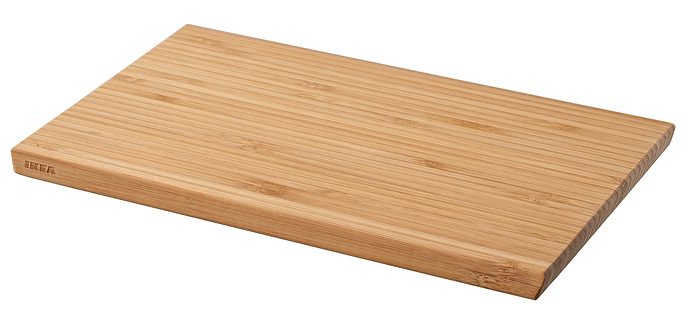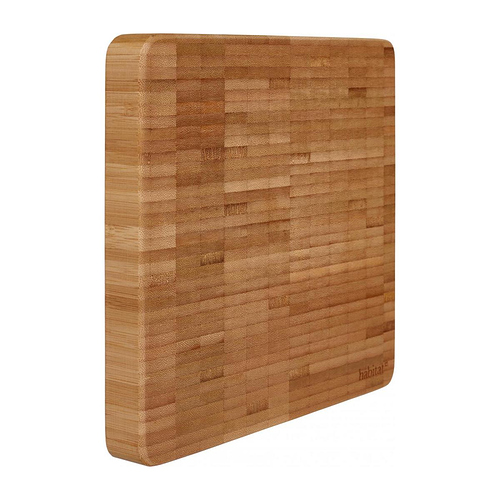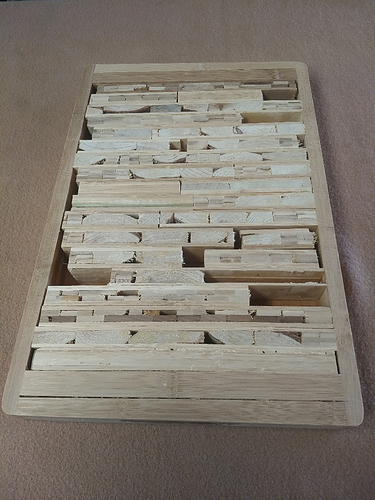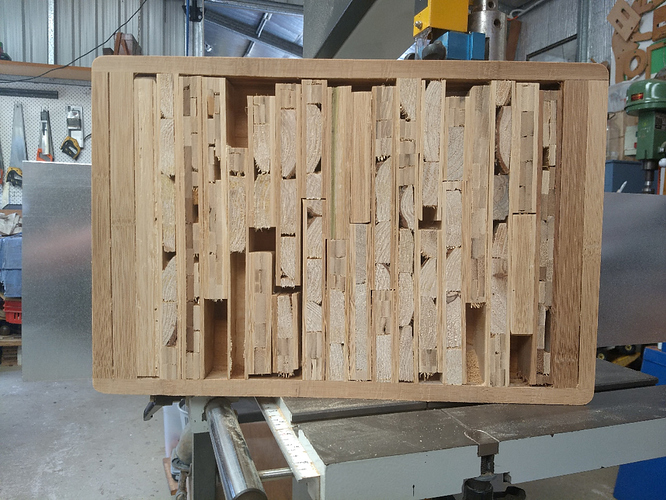I can definitely see a lot of uses for this, thank you Julien!
Even if the tramming is perfect, will that really remove the “subtle tool marks?” Even the hardest wood moves a little, unlike metal (arguable I know), and that’s where the marks I’ve ended up with seem to come from. For example, I often have marks on vertical cuts from the wood flexing. See @Julien pictures above for an example.
Fully agree, even with perfect tramming it does seem to depend on the wood a lot. Another reason I like bamboo so much (yes, I know that technically it’s not wood  ) : perfect bottom surfaces without having to be careful or do anything special. And my absolute favorite is engrain bamboo cuts. Smoooooth
) : perfect bottom surfaces without having to be careful or do anything special. And my absolute favorite is engrain bamboo cuts. Smoooooth
They also don’t run on “Petrol”. And the “wings” were "Fin’s ".
Where do you get your bamboo? What’s some good size stock to play with?
Ikea, and specifically one of their APTITLIG models:
which I have found to be the most consistent. It’s 9.5"x6"x0.5", I must have cut tens of those by now and never had any “surprise” because the inside looks exactly like the outside due to the nature of the bamboo strips glued side by side.
I stay away from the thicker models (from ikea or elsewhere) that look like this:
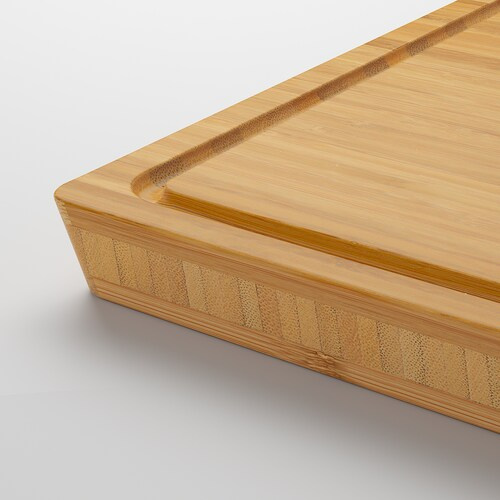
because the once you start milling deeper than that upper layer, you uncover the inner filling which is usually very low quality bamboo with holes and spots.
My absolute favorite stock is this block (from European retailer “Habitat”) of endgrain bamboo:
which I used for example for this and this project. It’s 1" thick, and I just love the look of a freshly cut endgrain bamboo (lots of minuscule holes which give it a very specific look)
I have yet to find a local supplier of “raw” bamboo stock so until then, Ikea it is (also, I just love the look on the Ikea person’s face at the counter when I scan 10+ cutting boards and nothing else  )
)
Thanks for the tip!
Sometimes I contemplate buying beautiful olive wood cutting boards at Homegoods… sometimes it seems they’re cheaper than going on line and trying find olive wood blank boards.
Regarding bamboo, I picked up a solid bamboo (made of laminated strips) countertop that was 1.5" x 26" x (I think) 93". Cut it up to make a bunch of large cribbage board blanks.
This works. https://www.thingiverse.com/thing:3657376 . If they made a two piece spindle mount, you could fit the sander in without needing an adapter.
Love that olive wood too Gary. I once asked @Julien about an olive wood project he had posted and apparently it’s readily available on his continent. Oh to be in the Old World…
Unfortunately not all bamboo cutting boards are created equal. Friend of mine had one (450mm x 300mm x 50mm) from some years back that was pretty worn and decided to resurface by running through the bandsaw taking about a couple of mm off. After doing this it felt pretty spongy and decided to investigate. He took the whole top layer off and the results are shown below. Not only did it contain lots of air but an assortment all kinds of timber offcuts little of which was bamboo.!
IMG_20201009_122525055|666x500
Perfect illustration of why I stay away from very thick bamboo boards (unless I know for a fact that they are solid bamboo all the way, because they are endgrain)
Thanks for sharing Patrick!
Chinese businessperson: “Hey! I got a swell deal on a bunch of old doors! What can we do with them?” 
I had given this some thought as well but never acted on it.
I think something like the following link would make sense.
Dome Sanding Mop 50mm-100mm Nylon Fiber Buffing Polishing Head With 6mm Shank | eBay
Ouch, that’s pricey.
I posted this in the other thread today.
They are not domed but assuming you have room for a path to run the thicker parts through it may achieve the same result. Just don’t dive too deep.
Abrasive Buffing Polishing Wheel Set for Rotary Tool
These things are nice, but they disintegrate fairly quickly. You can’t run them all the way down, because you just lose abrasive. If you aren’t careful they will leave a color streak, too.
To me, they’re just too bulbous for fine detail.
I haven’t tried them yet. Maybe this weekend.
Something like this for surface sanding?
Perhaps an adaptive pocketing toolpath would work here? Keeps the sander moving in small circles instead of straight lines…Might even be able to get it to gently squeeze to the edges more.

